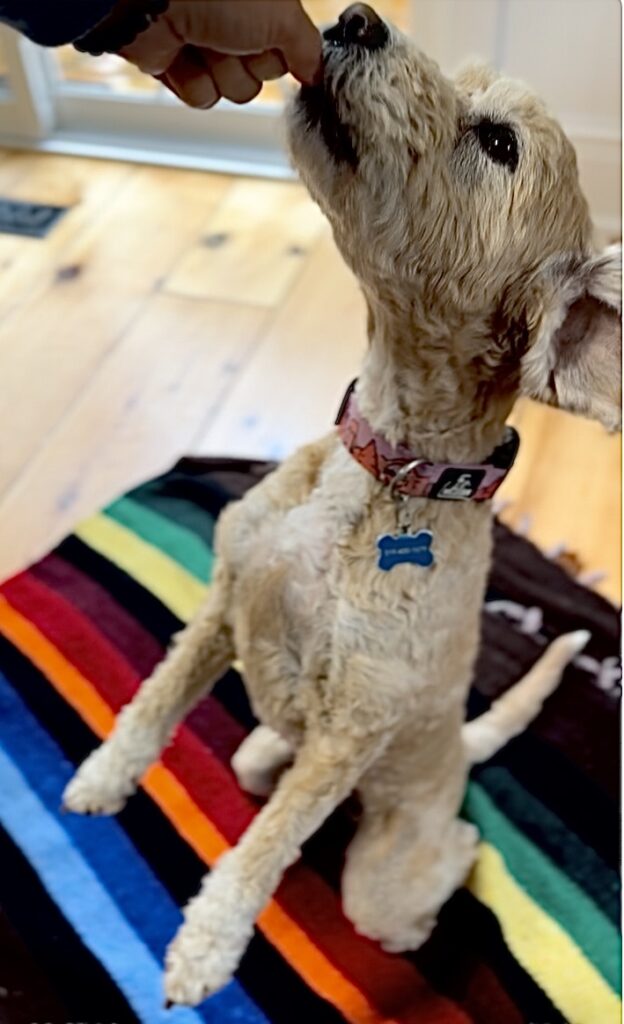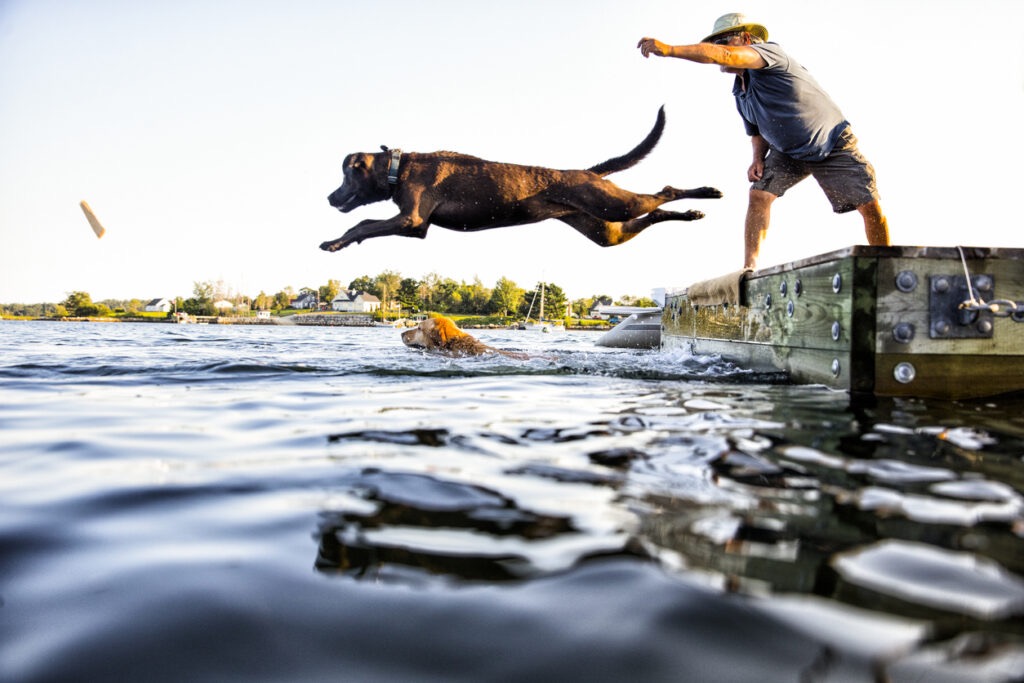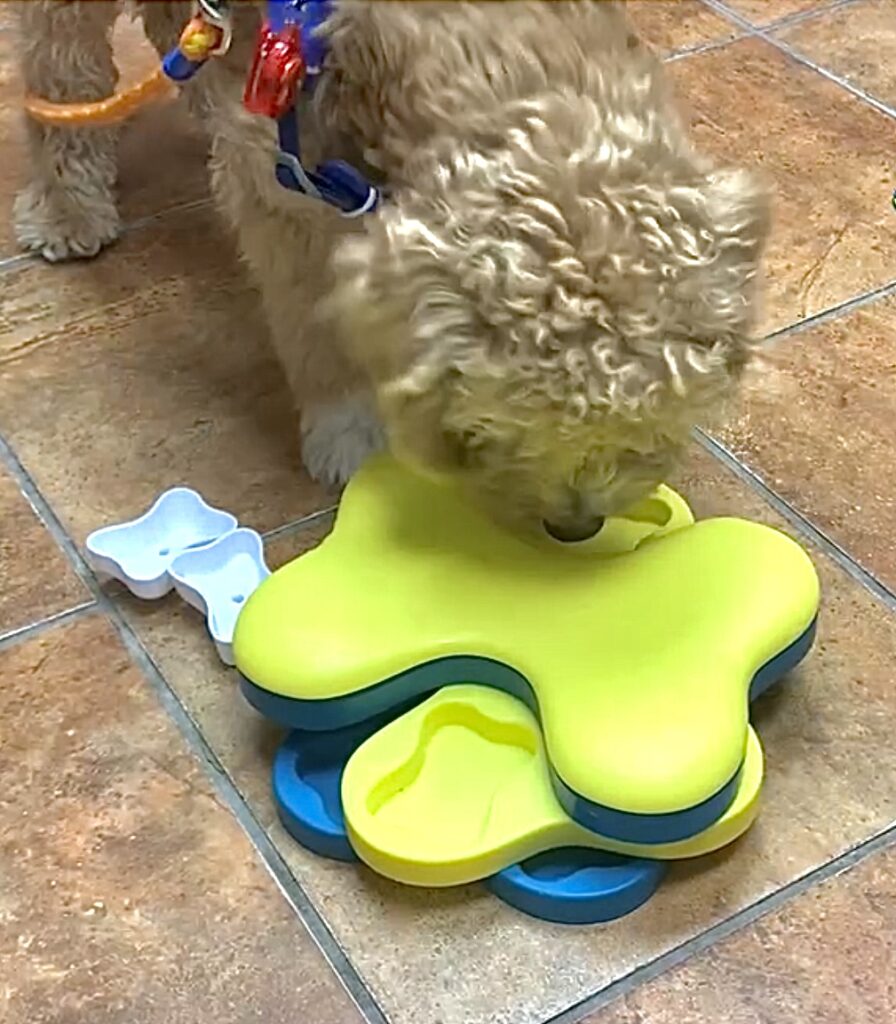By Krista Halling DVM DACVS
When we think about canine fitness, most people picture running, hiking, or biking with your dog. But balanced fitness—especially for dogs joining us on outdoor adventures—goes beyond these movements alone. As with people, dogs benefit from a well-rounded fitness program in order to reduce their risk of injury, increase their performance and improve their healthspan. Let’s look at these five core components of canine fitness and why each one matters.
1. Strength
The first canine fitness component is strength. This refers to a dog’s ability to generate force using their muscles. It includes muscular power in their core, back and limbs, helping dogs move efficiently and handle physical challenges on the trail and in everyday life.
Why it matters
Strong muscles help stabilize joints, support tendons and ligaments, and improve performance. This is especially important in dogs who hike, run, or jump—activities that increase orthopedic load.
Strength improves your dog’s speed and more importantly protects against injury by absorbing shock and distributing force across the musculoskeletal system (Zink & Van Dyke, 2018). It’s particularly critical for the large muscle groups of your dog’s core, forelimbs and hindlimbs.
A strong core stabilizes the spine and pelvis especially during rapid or sudden movement, improves posture, and helps dogs maintain control across uneven or shifting surfaces. Core muscle strength also helps co-ordinate movement between a dog’s forelimbs and hindlimbs. Conversely, core weakness increases the risk of overuse injuries, especially in dogs who carry backpacks or leap over logs (Shumway et al., 2020) or jump down from bike baskets.
Strength is equally important for the large muscles of your dog’s forelimbs, which bear up to 60% of a dog’s body weight during standing and even more when braking or descending (Williams et al., 2009) and hindlimbs, which are the primary engines for propulsion (Pfau et al., 2011). For instance, weak muscles, when repeatedly jumping into and out of a bike basket, could cause supraspinatus tendinopathy, iliopsoas injury or a cranial cruciate ligament tear.
2. Balance & Proprioception
The next pillar of canine fitness is just as important as strength. Balance is a dog’s ability to maintain body position whether still or moving. Proprioception is the internal sense of where their limbs and joints are in space.
Why it matters
Good balance and proprioception allow dogs to adjust quickly to unstable or changing terrain, minimizing the risk of falls, sprains or a misstep. Dogs with strong proprioceptive awareness are more agile, responsive, and confident in motion. This pillar is especially important for older dogs or dogs recovering from injury, as it supports coordination and reduces the risk of re-injury (Millis & Levine, 2014).
Dogs that lack balance and body awareness often over-rely on vision or momentum to guide movement, which increases their risk of stumbling or landing awkwardly—especially when running or leaping. Proprioceptive training also stimulates joint mechanoreceptors, promoting joint stability (Lafuente et al., 2018).
Proprioception, being part of the nervous system, is a use-it-or-lose-it system. So it’s important to regularly include activities that stimulate and train proprioceptive feedback. Walking your dog slowly over roots and rocks, or a ladder lying on grass will help their proprioception; walking your dog on an even sidewalk won’t.




3. Aerobic Capacity
Aerobic capacity refers to a dog’s body’s ability to take in oxygen, deliver oxygen to cells, and the cells’ ability to use oxygen during sustained physical activity. Aerobic fitness is an indicator of cardiovascular fitness and endurance.
Why it matters
A well-conditioned aerobic system enables dogs to hike, run, or bike for longer periods without fatigue or overheating. Aerobic exercise supports heart and lung health, promotes efficient thermoregulation, and enhances recovery after activity (Evans & de Lahunta, 2013). It also supports metabolic resilience—dogs with greater aerobic capacity can use fat as fuel more efficiently, preserving glycogen for bursts of effort (Hintz et al., 1971).
For athletic or working dogs, aerobic conditioning improves stamina and helps prevent performance drop-off over time. It also supports healthy aging by improving circulation, respiratory efficiency, and overall vitality (Gillette & Angle, 2008).
4. Flexibility
Flexibility is the ability of muscles and connective tissues to lengthen with their anatomical limits and allow joints to move through a full, functional range of motion.
Why it matters
Healthy flexibility helps dogs move freely and comfortably—think full hip extension during galloping or spinal rotation when navigating tight turns. Limited flexibility can lead to compensatory patterns and uneven loading, which in turn raise the risk of strains or orthopedic injury (Zink & Van Dyke, 2018).
Maintaining joint and soft tissue flexibility also supports mobility in aging dogs, helping them maintain stride length and posture.
Dogs with poor flexibility often develop movement restrictions that impact their gait, cause soreness, and reduce overall activity levels (Millis & Levine, 2014). Flexibility also plays a key role in reducing post-exercise stiffness, which may improve recovery after exertion (Gillette & Angle, 2008).
5. Mental Fitness
Mental fitness refers to a dog’s cognitive resilience, stress tolerance, focus, and emotional regulation. It’s a reflection of their confidence, adaptability, and psychological well-being.
Why it matters
Dogs that are mentally fit are better equipped to handle novel or unpredictable environments—like those encountered on trails, in campgrounds, or during multi-day travel. Mental fitness reduces fear-based behaviors and builds a dog’s capacity to process and respond to stimuli without overwhelm (Horwitz & Mills, 2009).
Training the mind also reduces stress-related behaviors and improves the dog-human bond. Dogs that regularly engage in cognitive or enrichment-based activities show greater resilience and slower cognitive decline with age (Dantas et al., 2014). Mental fitness is especially important for dogs that are expected to rest calmly during breaks or adjust quickly to new surroundings.
These pillars—strength, balance & proprioception, aerobic capacity, flexibility, and mental fitness—form the foundation of a dog’s health and performance. Whether your buddy joins you for hikes, paddles, road trips, or neighbourhood walks, regularly including all of these components will help your dog thrive and stay healthy on your adventures.
About the author
Krista Halling is a veterinarian board-certified with the American College of Veterinary Surgeons and creator of Dogpacking.com. She is also certified in the Human-Animal Bond and in Canine Physical Rehabilitation. Krista loves travelling and adventuring with River, her mini goldendoodle sidekick.
References
• Dantas, L. M., Delgado, M. M., & Mills, D. S. (2014). Environmental enrichment for dogs: prioritising the social and cognitive dimensions. Veterinary Clinics: Small Animal Practice, 44(3), 555–570.
• Evans, H. E., & de Lahunta, A. (2013). Miller’s Anatomy of the Dog (4th ed.). Elsevier.
• Gillette, R. L., & Angle, T. C. (2008). Recent developments in canine locomotor analysis: a review. Veterinary Journal, 178(2), 165–176.
• Hintz, H. F., Kallfelz, F. A., & Schryver, H. F. (1971). Fat metabolism in exercising dogs. Journal of the American Veterinary Medical Association, 159(11), 1670–1676.
• Horwitz, D. F., & Mills, D. S. (2009). BSAVA Manual of Canine and Feline Behavioural Medicine (2nd ed.). BSAVA.
• Lafuente, M. P., Provis, L., & Schmalz, E. A. (2018). Effect of a training program on strength and proprioception in canine athletes. Veterinary Journal, 237, 26–32.
• Millis, D. L., & Levine, D. (2014). Canine Rehabilitation and Physical Therapy(2nd ed.). Elsevier.
• Pfau, T., Garland de Rivaz, A., Brighton, S., & Weller, R. (2011). Kinetics of jump landing in agility dogs. Veterinary Journal, 190(2), 278–283.
• Shumway, K. L., Levine, D., & Johnson, A. J. (2020). Core muscle activation and the relationship to injury in sporting dogs. Topics in Companion Animal Medicine, 39, 100429.
• Williams, S. B., Usherwood, J. R., Jespers, K., & Wilson, A. M. (2009). Exploring the mechanical basis for acceleration: pelvic limb locomotor function in racing greyhounds. Journal of Experimental Biology, 212(4), 550–565.
• Zink, C., & Van Dyke, J. B. (2018). Canine Sports Medicine and Rehabilitation(2nd ed.). Wiley-Blackwell.




Leave a Reply